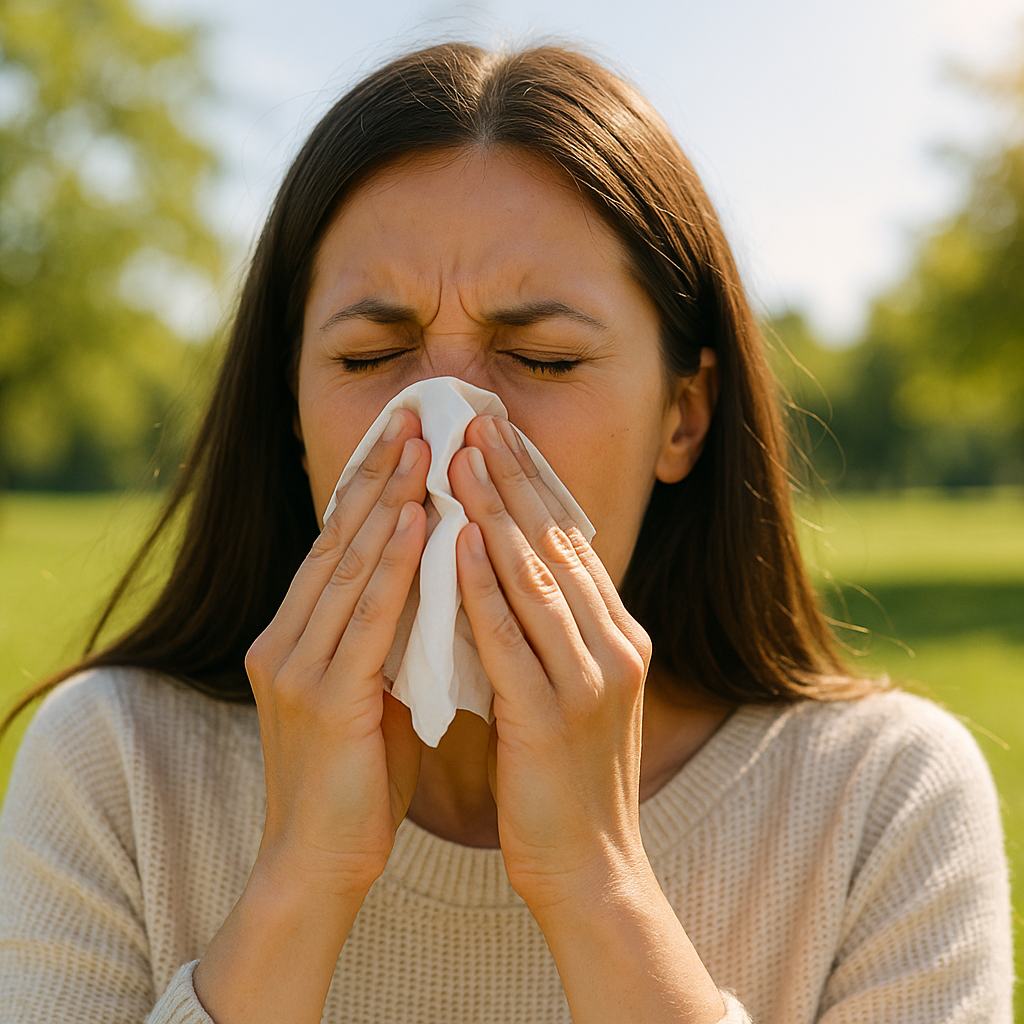As summer unfolds across the UK, millions of Britons brace themselves for the familiar onslaught of hayfever symptoms. Those itchy eyes, sneezing fits, and runny noses can turn the most beautiful days into a misery for the estimated 13 million UK residents who suffer from seasonal allergic rhinitis (the medical term for hayfever). But with the right medication approach, you can reclaim those sunny days and enjoy the outdoors again.
At Happy Pharmacy we are here to help with range of Allergy Treatments.
Understanding How Antihistamines Work
When you have hayfever, your body mistakes harmless substances like pollen as dangerous invaders. In response, your immune system releases a substance called histamine, which triggers those all-too-familiar symptoms: itchy, watering eyes, a running or blocked nose, sneezing, and skin rashes.
Antihistamines work by blocking the effects of histamine in your body (1). They can help prevent symptoms if taken before exposure to allergens or reduce symptom severity if taken afterwards. This simple but effective mechanism makes antihistamines the cornerstone of hayfever management.
Types of Antihistamines: Drowsy vs. Non-Drowsy
Drowsy Antihistamines (First-Generation)
These include Chlorphenamine (Piriton), Diphenhydramine, Hydroxyzine, Promethazine, and Cinnarizine. These medications are effective but often cause drowsiness, affecting 50-60% of users (2).
Non-Drowsy Antihistamines (Second-Generation)
These include Cetirizine, Loratadine, Fexofenadine, and Acrivastine. They are generally less likely to cause drowsiness, making them more suitable for daytime use.
Which Antihistamine Is Best for Hayfever?
There's no one-size-fits-all solution. Individual responses vary, and experimenting with different options can help you find the most effective one for your symptoms.
How to Take Antihistamines Effectively
-
Timing Matters: Take antihistamines before exposure to allergens for best results. For persistent symptoms, consistent use works better than occasional use.
-
Dosage Guidelines: Follow recommended dosages, adjust for age or underlying health conditions, and avoid exceeding the advised amount.
Safety Considerations and Side Effects
While generally safe, antihistamines can interact with other medications and may not be suitable for everyone. Consult with a pharmacist or GP if you are pregnant, breastfeeding, or have pre-existing health conditions.
Beyond Tablets: Other Antihistamine Formulations
Antihistamines are available in various forms, including tablets, syrups, nasal sprays, eye drops, and topical creams.
Complementary Approaches for Hayfever Management
Consider combining antihistamines with nasal corticosteroids, saline nasal sprays, and practical self-care strategies like monitoring pollen levels, managing your home environment, and protecting yourself outdoors.
When to Seek Further Help
Consult your GP if symptoms persist despite using antihistamines, or if you experience severe symptoms such as wheezing or shortness of breath.
Come and take a look at the range of treatments we have available.
Blog medically reviewed by : Harminder Deol, GPhC Registered Prescriber, 15 May 2025
References
-
Jutel M, Akdis M, Akdis CA. Histamine, histamine receptors and their role in immune pathology. Clin Exp Allergy. 2009;39(12):1786-1800.
-
Church MK, Maurer M, Simons FE, et al. Risk of first-generation H₁-antihistamines: a GA²LEN position paper. Allergy. 2010;65(4):459-466.
-
Compalati E, Baena-Cagnani R, Penagos M, et al. Systematic review on the efficacy of fexofenadine in seasonal allergic rhinitis. Int Arch Allergy Immunol. 2011;156(1):1-15.
-
Powell RJ, Leech SC, Till S, et al. BSACI guideline for the management of chronic urticaria and angioedema. Clin Exp Allergy. 2015;45(3):547-565.


Share:
Restoring More Than Hair: How Online Regaine Treatments Are Transforming Confidence for Men
Reclaiming Confidence: How Online ED Solutions Are Changing Men's Lives